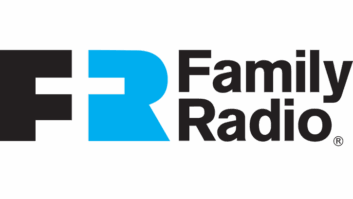
Access a PDF of NRSC-5-C at www.nrscstandards.org.
At the Fall Radio Show, the Digital Radio Broadcasting Subcommittee of the NRSC adopted an updated standard for HD Radio. This new standard is available for inspection at the NRSC website, www.nrscstandards.org. It reflects a range of improvements and enhancements which improve the flexibility and performance of HD Radio, most of which have been under discussion and testing for some time.
The National Radio Systems Committee is a joint venture of the Consumer Electronics Association and the National Association of Broadcasters. It serves as a standards-setting body for technical aspects of the over-the-air broadcast industry, helping to ensure that working radios are available to consumers as technology evolves.
DENSE AND INTERLOCKING
At first glance, NRSC-5-C is a bit hard to dissect. The actual standard, for all its 53 pages, feels incomplete, although the outlines of the HD Radio system can be seen in all the definitions and diagrams. The real meat is to be found in the reference documents, which detail all aspects of the operation and design of the HD Radio system. Reviewing these reference documents reveals all the newest and latest features, both existing and proposed. From the document dates, it appears that iBiquity made a major set of revisions in August of 2011, which are just now being adopted by the NRSC. Some are familiar and some may not be, but the changes reflect the adaptations being made by HD Radio to survive and thrive in the marketplace.
IMPROVEMENTS TO THE SYSTEM
One good example of this flexibility is the formal allowance of asymmetric levels of digital sidebands on both FM and AM stations using HD. This was really an essential answer for instances where digital broadcasting by one station would result in unintended interference to an adjacent or first adjacent station. By permitting lower digital sidebands on one side, HD now offers a satisfactory engineering and regulatory response to such interference.
A second improvement addresses one of the major criticisms of the original HD system — lack of adequate reception, particularly indoors. In response, the new standard includes operation with up to a 10 dB increase of power in the digital sidebands. Coupled with the asymmetrical sidebands above, this allows stations to offer the most digital power possible without analog conversion. HD Radio now has the signal strength to compete as originally intended.
One of the most important strengths of HD Radio is the ability to operate in a hybrid mode during the difficult period of transition when literally hundreds of millions of receivers need to be replaced without losing the entire radio industry. But there were many who complained that the original AM HD systems forced analog stations to limit their audio modulation to a 5 kHz bandwidth. The NRSC-5-C standard unveils two new modes of AM operation that improve the analog bandwidth to 8 kHz and 9.4 kHz respectively. This may encourage some to sample AM HD again, now that limits to the host channel no longer hurt station competitiveness relative to other analog-only AMs.
LONG-TERM PROPOSITION
It seems like a long time since the first test stations began to implement HD Radio on hacked together computer platforms. Although the industry was still embroiled in a furious debate over whether HD Radio was necessary, the early days of conversion saw literally thousands of stations take the plunge into digital radio. But then conversions slowed to a crawl as the economy fell into a recession and they have never really recovered since.
These days if I bring up the topic of HD Radio with fellow engineers, it is easy to see that most were disappointed by digital radio and feel the technology has no future. This feeling is especially strong in the ones who have given their lives and hearts to music formats. Ironically, we’re at a moment where millions of HD radios are being sold every year now that car manufacturers have decided to get out of the radio business and back to selling cars. IBiquity President and CEO Bob Struble recently reported to Radio World that over 10 million HD receivers had been sold and that 11 million was not far behind.
My own thinking on HD was that it was never going to be possible to transform the radio marketplace with digital radios unless and until it was accepted by car manufacturers as a standard. With hundreds of millions of radios out there in consumer hands, it was just asking too much to expect them to trade in a radio for a new one that delivered nearly the same performance. However, with the regular 10–12 year replacement cycle of the automobile, it could be accomplished at a measured pace. The question is whether other competitive entertainment services would overtake radio while we waited for digital.
So far that hasn’t happened. HD Radio has shown itself to be flexible and on a path to slowly improve its performance and features.
Will it be in time?
Michael LeClair is chief engineer for radio stations WBUR(AM/FM) in Boston; he has been technical editor of Radio World Engineering Extra since its inception in 2005.






